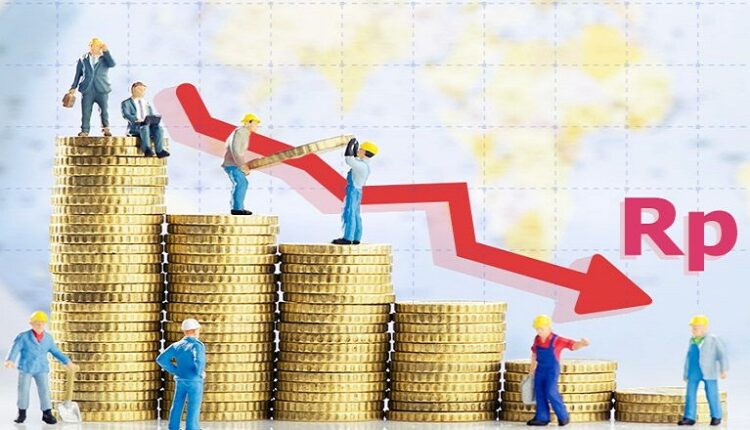Appreciating Indonesia’s Debt Decrease
By: Putu Prawira)*
Indonesia’s External Debt (ULN) fell again in May 2022, thus the decline has occurred in 3 consecutive months. The decline occurred in both government and private debt. This debt reduction needs to be widely appreciated by the public as a form of the Government’s commitment to maintain the debt portfolio and reduce dependence on foreign parties.
Bank Indonesia (BI) reported that May’s external debt fell 3.8 billion US Dollars from the previous month to 406 billion US Dollars or around Rp 6,094 trillion (BI July 14 middle rate Rp 14,999/US Dollar). Compared to May 2021, the external debt contracted 2.6% year on year (yoy). Government debt recorded a decline in 3 consecutive months, to 188.2 billion US dollars.
Similar to the previous month, the government under the leadership of President Joko Widodo, who returned to pay maturing Government Securities (SBN), as well as foreign investors who released a lot of Indonesian bonds, contributed to the decline in external debt in May.
Data from BI shows that the payment of SBN debt in May reached 1.175 billion US dollars with a principal of 1.066 billion US dollars and an interest of 109 US dollars. In its official release, BI wrote, Foreign loans experienced a slight increase from the previous month, especially bilateral loans from several partner institutions aimed at supporting the financing of several priority programs and projects.
Then foreign investors who continue to release SBN also make external debt decline. Based on data from the Directorate General of Financing and Risk Management (DJPRR) of the Ministry of Finance, at the end of May, foreign ownership in the SBN market reached Rp. 795.73 trillion, or a decrease of Rp. 32 trillion from the end of April.
The large capital outflow was due to the United States (US) central bank aggressively raising interest rates, thus triggering an increase in US bond yields. Meanwhile, based on creditors, of the top 5 countries, only debt to Hong Kong has increased.
Debt to Singapore decreased for 3 months in a row and debt to Japan fell for 2 months in a row. Debt to the US, which soared and hit a record high in April, decreased by 34 million US dollars, to 34,864 billion US dollars.
Debt to China also decreased for the second month in a row. In May the value was 21.779 billion or Rp 326.7 trillion, down around Rp 2.9 trillion from the previous year. Of the total money to China, the government’s debt is only 1.58 billion, while the private debt is 20.19 billion US dollars.
After experiencing an increase of US$3.5 billion in April, private external debt in May finally experienced a decline of US$1.5 billion. BI stated that the position of private external debt in May 2022 was recorded at 209.4 billion US dollars, down from 210.9 billion US dollars in April 2022.
Meanwhile, the percentage decrease was recorded at 0.7% (yoy). Payments of maturing loans and debt securities, especially non-financial companies, have triggered the decline in private external debt.
Meanwhile, according to a report from BI, based on the sector, the largest private external debt comes from the financial and insurance services sector, the electricity, gas, steam/hot water and cold air supply sector, the mining and quarrying sector, and the manufacturing industry sector, with a share of 77.3 % of total private external debt. This external debt remains dominated by long-term external debt with a share of 74.4% of total private external debt.
With the decline in government and private external debt, the ratio of external debt to gross domestic product (GDP) fell to 32.3% from the previous 32.6%. The smooth payment of debt by the government seems to have been driven by steadily improving state revenues. Moreover, there was a spike in international commodity prices that appeared like a ‘collapse of durian’. So that in the first four months of this year, the State Budget has a surplus of Rp 103.1 trillion or 0.58% of GDP.
The Director General of Financing and Risk Management at the Ministry of Finance, Luky Alfirman, said that one of the good news is that there is a fairly high increase in commodity prices such as coal, palm oil and so on, it also has an impact on improving state revenues.
Luky also explained, if we look at the first 4 months until April, which is a surplus, it turns out that it is very rare for the State Budget to have a surplus up to the first 4 months.
State revenues were recorded at Rp 853.6 trillion and state expenditures reached Rp 750.5 trillion. The primary balance from the APBN as of April 2022 also recorded a surplus of up to Rp 220.9 trillion. Financing fell to Rp 142.7 trillion. Of course, this decline should be appreciated, especially in the midst of the inflationary storm that has hit several countries in the world, Indonesia was able to continue to show its strength to be able to reduce the number of external debt, both private and state.
)* The author is a contributor to the Press Circle and Cikini Students
